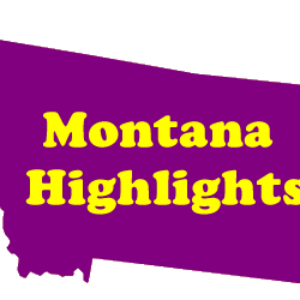Glacier Distilling Co. is practicing “authentic innovation” as a strategic recommendation from the Whisky Market forecasts. Amid the uncertainty over imports caused by tariffs, it is good to bet on products that feature local ingredients or specialty kegs, barrels or stills. 15 year old Glacier Distilling Co. from Coram is producing it 30 different spirits largely made with ingredients sourced in Montana. They use grain grown in Conrad, apples from Rollins and cherries from Bigfork just to name a few.
Benefis Health System has opened a new urgent care clinic in Lewistown.
A new bar with an old name is coming to downtown Bozeman – Stockman Bar. Brett Evje, the owner behind Plonk, J.W. Heist and Stacey’s in Gallatin Gateway is opening the bar named Stockman’s Bar in Bozeman. It is located next to Schnee’s on Main Street.
Aurore French Bakery has opened a second location in the Baxter Hotel in downtown Bozeman. The new shop serves as a showcase rather than a bakery with all the breads and pastries prepared at the original Four Corners kitchen.
The Navajo Transitional Energy Co. (NTEC) has made a bid of $186,000 to lease 167 million tons of coal on federal lands in southeastern Montana. The lease is in the Powder River Basin, the most productive coal fields in the nation. Officials under the Biden administration banned sales from the region.
Hardees in Helena has closed permanently. The business was located at 320 Euclid Ave. Hardee’s is part of a chain that includes Carl’s Jr., Green Burrito and Red Burrito brands.
According to a report released Monday by the National Park Service, the state is a top-15 benefactor of national parks in terms of visitor spending, jobs, labor income, value added to the state.
A study on the economic impact of fishing in Montana released last week found anglers spent nearly $1.3 billion in 2024 on trips in the Treasure State, the bulk of that money coming from anglers primarily looking for trout and other coldwater fish species. The Montana Legislature in 2023 commissioned the study from the University of Montana’s Bureau of Business and Economic Research and Montana Fish, Wildlife & Parks to get a better grasp on how much money and economic activity the industry creates.
The US Forest Service has approved The Libby Exploratory Project which was proposed by Hecla, a mining company from Idaho. There is a 16-year timeline for the project. Little to no draw-down of surface water is expected from the project.
Former Prairie County resident Cliff Glade was inducted as a legend into the Montana Pro Rodeo Hall and Wall of Fame last week. The Legend Inductees is the highest honor of the organization awards at the Hall of Fame.
The City of Glasgow has opened its new National Outdoor Fitness Court. The Fitness Courts at Hoyt Park near the skatepark and swimming pool. The all-outdoor gym features seven workout stations designed for bodyweight exercises, offering a complete workout for users of all fitness levels. Participants can exercise independently or download the free Fitness Court app, which provides coaching and guided routines.
DI Architects and Design (SDI) are in phase one of the renovation of Mountain States Telephone Building located at 908 Main St., in Miles City. The building was built in 1914 and the building served as the headquarters for the company that first brought telephone service to eastern Montana.
The Missoula Thrift opened at 1922 Brooks Street, Unit 9, in the Holiday Village Shopping Center recently. The thrift store is operated by Flathead Industries, a nonprofit that helps people with disabilities. The store has a huge variety of clothing, furniture, home goods and other items. It’s open every day from 10 a.m. to 6 p.m. with some closures on various holidays.
The Super Thrift Missoula opened at 2304 W. Broadway in Missoula last month. It’s operated by the nonprofit Adult Teen Challenge Pacific Northwest.
A new facility with indoor batting cages that offers baseball and softball hitting instruction has opened in Missoula. D-Bat Missoula is located at 821 Burlington Avenue.
Starbucks has applied for a permit to build out a coffee shop in the Lommasson Center on the University of Montana campus.
Youth Homes, a nonprofit in Missoula that cares for kids facing neglect, abuse, emotional trauma and substance abuse issues has received a huge matching donation of $100,000. The donor matched another $100,000 raised by the organization’s annual fundraising event.
The Montana Department of Environmental Quality has approved a plan by the Spanish Peaks Mountain Club to convert treated wastewater into snow for skiing. The project will make Big Sky Resort the first public ski area in Montana to utilize powder made from what was once sewage. Conservation groups have praised the approach as an ideal way to use wastewater. According to Lone Mountain Land Company, which owns the club, Big Sky Resort will use up to 23 million gallons of treated wastewater.
The Montana Public Service Commission has approved a rate increase for Montana-Dakota Utilities Co. natural gas customers, bringing the average monthly bill to $60.54. That dollar amount is up from $44.61 in July of last year when Montana Dakota Utilities (MDU) first asked the Public Service Commission to approve their rate increase request. The all-Republican Public Service Commission (PSC) is only responsible for approving a portion of that total increase, as other parts of it are made up by other charges that the commission can’t regulate. The increase approved 4-0 with one commissioner absent, will result in a $7.3 million increase in annual revenue for MDU.
Once a $308 million plan is approved, rural Central Montana residents may get access to broadband internet connections. This is the high-speed service needed for rapid connections. Montana’s proposal is not yet approved by the National Telecommunications and Information Administration. Nearly 3,000 locations in Fergus and Cascade counties will receive broadband service from Inland MT, LLC, a subsidiary of Inland Cellular.
Canadian Prime Minister Mark Carney raised the prospect of reviving the contentious Keystone XL pipeline project with U.S. President Donald Trump during his White House visit recently. A Canadian company pulled the plug on it four years ago after the Canadian government failed to persuade President Joe Biden to reverse his cancellation of its permit on the day he took office. It was to transport crude from the oil sand fields of western Canada to Steele City, Nebraska. The project would have moved up to 830,000 barrels (35 million gallons) of crude daily. Officails linked energy cooperation to Canada’s steel and aluminum sectors, which are currently subject to 50% U.S. tariffs.
Missoula Montana Airport became a small-hub status in its record-breaking year in 2024. Bozeman remained Montana’s busiest airport, landing at 92 on the list of national commercial airports ranked by enplanements. Missoula landed at 138, followed by Kalispell at 139. Billings was listed at 143, Great Falls at 196, Helena at 227, and Butte at 363.
Bill Warden was appointed by President Donald Trump to serve as the USDA Rural Development State Director for the state of Montana. Director Warden will implement President Trump’s America First agenda at USDA Rural Development, ensuring the needs of America’s farmers, ranchers, and producers remain a top priority.
The TechLink Center at Montana State University recently secured a five-year partnership agreement to help the U.S. Department of Veterans Affairs move new technologies from its research centers to the commercial marketplace, a process known as tech transfer.





